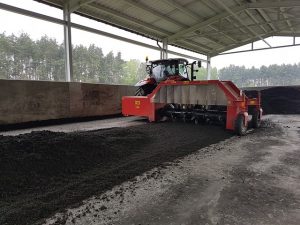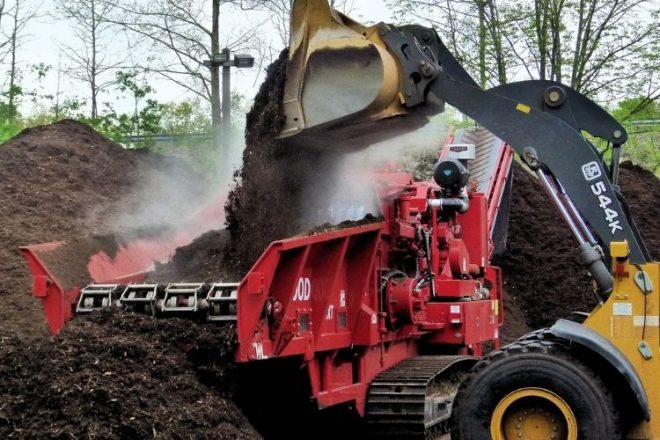Composting is one of the most traditional technologies of domestic and industrial waste recycling. The technology is based on the storage of waste materials, their treatment with special compositions (if necessary) with subsequent biodegradation into components that are safe for humans and the environment.
Most often composting of organic waste is carried out:
- Food scraps and garbage from processing plants (vegetable edible oil, sugar, flour, and cereal plants, food/semi-food production and packaging plants, meat packing plants);
- garbage of public catering facilities;
- liquid and paste-like household waste;
- paper, vegetation (grass clippings, branches after pruning);
- fabrics, textile shoes – for such waste materials the technology of industrial composting is applied.
Important: When collecting raw materials for composting, you must exclude waste that contains toxins, toxic chemicals, radioactive and hospital waste.
Peculiarities of disposal (recycling) of waste, garbage, and recyclable materials
Composting of municipal solid waste on an industrial scale is carried out at specially equipped landfills using the technology of field biological decomposition. To create free oxygen access to the raw material and accelerate the decomposition process, all waste is pre-shredded and regularly mixed.
To avoid the formation and spread of a specific odor, the waste ready for disposal is covered with peat or soil. Depending on the type of waste, the process of composting, complete decomposition, and/or decontamination of pathogenic microflora to produce a valuable organic fertilizer (compost) can last from 2-6 months to 2-3 years.
Special landfills for composting are arranged on water-permeable and very hard soils. It is not allowed to recycle organic matter in park and resort areas, near bodies of water and settlements (the distance of the landfill is strictly regulated).

Food waste composting facility
1. household waste goes to the sorting station.
2. The sorting line selects the useful fraction (plastic, glass, cardboard, metal) from the waste.
3. After sorting the waste is sent to the screen where it is divided into coarse and fine fractions. The fine fraction contains up to 80% of organic, food waste. The biogenic part of MSW enters the composting shop by the conveyor belt.
4. The dump moves towards the conveyor belt and forms the first compost pile.
5. A tedder peddles the pile and introduces thermophilic lactic acid bacteria. Consuming organic waste as a food substrate, microorganisms multiply, produce organic compounds and energy. During the composting process, the pile is heated to a temperature of + 158°F
to kill pathogenic microflora, helminth eggs, and fly larvae. The mesophilic microorganisms inevitably die off, while the thermophilic microorganisms remain active, which speeds up the composting process. Turning and turning the compost pile is repeated every three days in order to oxygenate the compost mass and actively evaporate the excess moisture. In this way, the compost is moved seven times from the dirty to the clean zone and decontaminated in 14 days.
6. The last pile is thrown onto the conveyor belt by the tender and the compost is transported by the conveyor belt to the sifter, where fine plastics, paper, and glass are separated.
7. The clean compost after separation is additionally disinfected with ultraviolet irradiation and goes to the storage bunker. The resulting compost is a homogeneous, dark brown loose mass.
reference
https://www.colorado.edu/ecenter/2020/12/10/what-industrial-composting

